Travelling to Bhutan from Europe is now more accessible than ever, thanks to convenient flight connections and reliable transit hubs. Whether you’re departing from major cities like London, Paris, Frankfurt, or Zurich, reaching Bhutan is a seamless experience with well-coordinated routes via hubs such as Bangkok, Singapore, Delhi, or Dubai. This guide will walk you through every step of planning your journey to the Land of the Thunder Dragon.
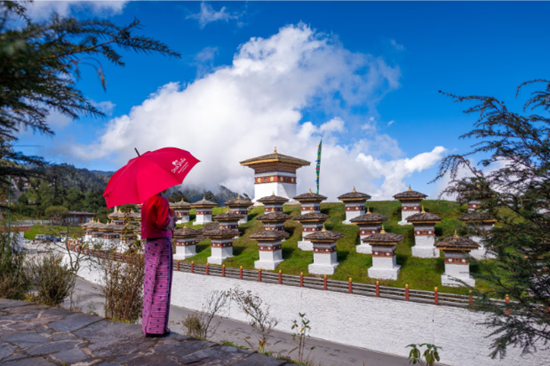
1. Understanding Bhutan as a Destination
Bhutan, the "Land of the Thunder Dragon," is a small Himalayan kingdom nestled between India and China. Renowned for its breathtaking natural beauty, ancient monasteries, and commitment to preserving its cultural heritage, Bhutan offers a unique experience for travellers seeking tranquility and authenticity. Unlike many other destinations, Bhutan measures its success through Gross National Happiness (GNH), emphasizing environmental preservation, cultural values, and sustainable economic development over material wealth.
For European travellers, Bhutan presents a perfect blend of adventure, spirituality, and untouched natural beauty.
Key highlights of Bhutan include:
Majestic Himalayan peaks and verdant valleys.
A rich Buddhist heritage visible in its monasteries and dzongs.
Tshechu Festivals that are filled with colorful dances and traditional music.
Pristine, biodiverse landscapes ideal for trekking and eco-tourism.
2. Key Considerations Before Traveling
a. Visa Requirements
All tourists, except for Indian, Bangladeshi, and Maldivian nationals, need a visa to enter Bhutan. European travellers can apply for a Bhutan visa online through the Department of Immigration's website.
While online applications are possible, it's still highly recommended to book your trip through a licensed tour operator who can apply a visa on your behalf for a seamless experience.
b. Documents required for Bhutan visa application:
Copy of Passport
Recent passport size photo
Passport must have minimum validity of six months from the intended date of departure from Bhutan
Valid travel insurance (optional but highly recommended)
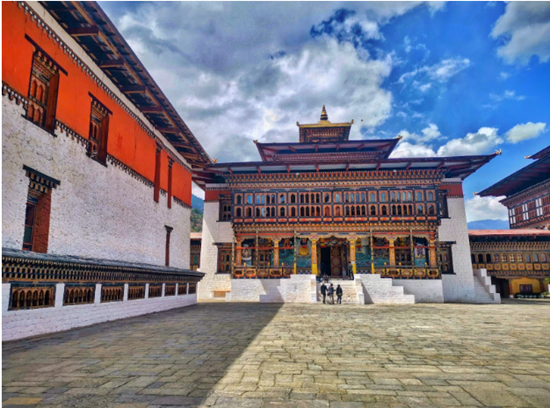
c. Sustainable Development Fee (SDF)
To maintain its high-value, low-impact tourism model, Bhutan charges a Sustainable Development Fee (SDF) of USD100 per person per night. This fee supports free healthcare and education for Bhutanese citizens, as well as environmental and cultural preservation initiatives.
Children under 5 years old are exempt from the SDF, while those aged 6 to 11 years are required to pay USD 50 per night. It's important to note that the SDF does not cover accommodation, meals, transportation, or guide services.
Regional tourists from India are required to apply for a permit and pay 1200 INR/night.
|
Age
|
SDF
|
Permit (Indian Passports only)
|
|
0- 5 years old
|
Gratis
|
1200 INR / night
|
|
6 – 11 years old
|
$50 USD/night
|
|
Adult above 12 years old
|
$100 USD / night
|
d. Tour Packages
Visitors can book Bhutan tour packages through a licensed tour operator. These packages typically include:
Accommodations (from 3-star hotels to luxury resorts).
All meals, snacks, and non-alcoholic beverages.
A licensed tour guide fluent in English.
Ground transportation and driver services.
Entry fees for attractions.
A flexible itinerary based on your interests.
Druk Asia’s tour packages can be tailored to focus on specific themes, such as wellness, luxury, trekking, photography, or cultural immersion.
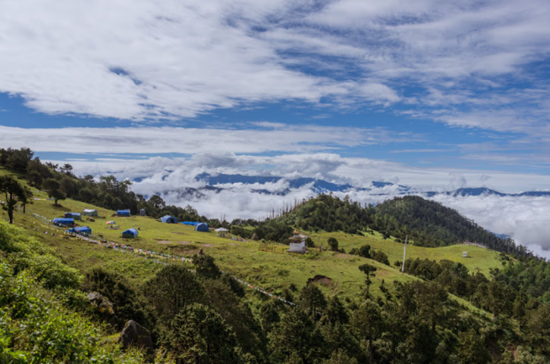
3. Travel Logistics
a. Flights to Bhutan
Bhutan’s sole international airport is Paro International Airport (PBH), located in a picturesque valley surrounded by mountains.
Flights to Paro are often scheduled in the early morning to take advantage of clear weather conditions. Book your international flights to the transit hub first, and then coordinate your connecting flight to Paro with your tour operator.
Since there are no direct flights from Europe to Bhutan, you’ll need to transit through one of the regional hubs via Royal Bhutan Airlines, Drukair, Bhutan’s national carrier:
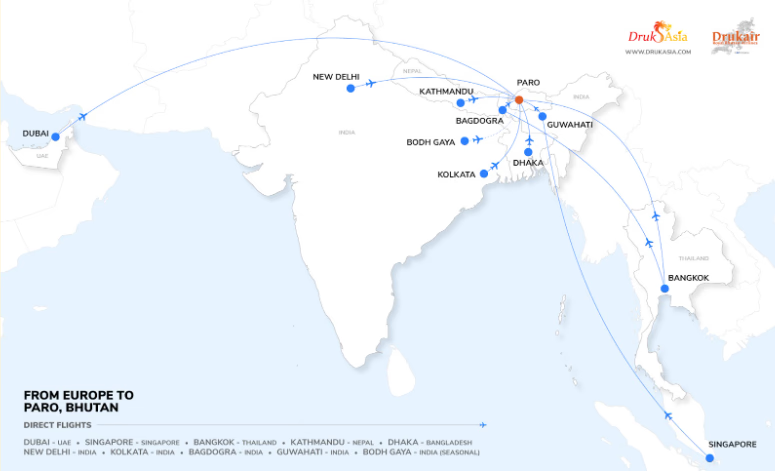
For transit from Asia
Bangkok, Thailand (Popular)
Bangkok to Paro: Opt for the Bangkok-Paro route via Drukair, Bhutan’s national carrier. The daily flight departs Bangkok at 5:00 AM and arrives in Paro at 7:15 AM, giving you a full day to immerse yourself in Bhutan’s beauty.
Paro to Bangkok: Paro-Bangkok route offers one of the latest departure flights from Bhutan. The latest return flight from Paro to Bangkok departs at 4:20 PM, landing in Bangkok at 8:30 PM.
Check out the full article on how to travel to Bhutan from Bangkok, Thailand.
Traveling to Bhutan via Bangkok is one of the most convenient and popular routes for European travellers. Here are several reasons why Bangkok is an excellent choice as a transit hub:
1. Frequent Flight Connections
Bangkok is one of the busiest international airports in Asia, offering numerous flight options from major European cities such as London, Paris, Frankfurt, and Amsterdam.
Airlines like Thai Airways, Lufthansa, and Emirates frequently operate flights between Europe and Bangkok, ensuring a wide range of schedules and pricing options.
2. Daily Flights to Bhutan
Bangkok has daily flights to Paro International Airport operated by Drukair (Royal Bhutan Airlines), making it one of the most reliable hubs for reaching Bhutan.
The flight duration from Bangkok to Paro is approximately 3 hours, offering a seamless transition for travellers.
3. Visa-Free or Visa-On-Arrival Policy
Thailand offers visa-free or visa-on-arrival options for many European travellers, making a stopover in Bangkok hassle-free.
This flexibility allows travellers to explore Bangkok for a few days before continuing to Bhutan.
4. Tourism and Services
Bangkok is a vibrant city with world-class hotels, spas, and restaurants, allowing travellers to relax and rejuvenate before their Bhutan trip.
A layover in Bangkok offers an excellent opportunity to explore Thailand’s rich culture and cuisine. Popular attractions like the Grand Palace, Wat Arun, and Chatuchak Market can be enjoyed in a short time.
5. Cost-Effectiveness
Flights from Bangkok to Bhutan are generally more affordable compared to other transit hubs like Singapore or Delhi.
Bangkok's competitive pricing for accommodation, food, and transportation makes it a cost-effective choice for a stopover.
Singapore
Drukair operates direct flights between Singapore and Paro twice a week.
Singapore to Paro: Thursdays and Sundays: Flight KB541 departs Singapore Changi Airport (SIN) at 12:30 PM and arrives in Paro International Airport (PBH) at 4:45 PM local time. The flight includes a brief stopover in Guwahati, India, for refueling, during which passengers remain on board.
Paro to Singapore: Wednesdays and Saturdays: Flight KB540 departs Paro International Airport (PBH) at 7:50 AM and arrives at Singapore Changi Airport (SIN) at 3:55 PM local time. This flight also includes a short stopover in Guwahati, India, for refueling, with passengers remaining on board.
Check out the full article on how to travel to Bhutan from Singapore.
Here are the key reasons why Singapore is an excellent transit hub:
1. World-Class Airport: Changi Airport
Singapore Changi Airport is consistently ranked among the best airports globally, offering unmatched amenities and services.
Features include free Wi-Fi, relaxation zones, a rooftop swimming pool, a butterfly garden, and a wide range of dining and shopping options.
2. Direct Flights from Europe
Singapore is a major aviation hub with frequent direct flights from major European cities, including London, Paris, Frankfurt, Zurich, and Amsterdam.
Airlines like Singapore Airlines, British Airways, and Lufthansa provide high-quality service and convenient schedules for European travellers.
3. Visa-Free Entry for Many Europeans
Many European nationals can enter Singapore visa-free for up to 90 days, making a stopover simple and hassle-free.
Travelers can easily explore Singapore’s attractions during a layover seamlessly.
4. Tourism and Services
Singapore boasts iconic attractions like Marina Bay Sands, Gardens by the Bay, Sentosa Island, and the Singapore Zoo.
Even short layovers allow for a taste of Singapore’s unique blend of modernity and tradition. Singapore is a global melting pot, offering a chance to experience diverse cultures and cuisines in one compact city-state.
Its efficient public transportation system makes navigating the city easy for travellers during short stays.
New Delhi, India
Drukair operates direct flights between Paro, Bhutan, and New Delhi, India, five times a week.
New Delhi to Paro:
Tuesdays, Wednesdays, Fridays, Saturdays, and Sundays: Flight KB201 departs New Delhi at 12:30 PM and arrives in Paro at 3:20 PM local time.
Paro to New Delhi:
Tuesdays, Wednesdays, Fridays, Saturdays, and Sundays: Flight KB200 departs Paro at 9:40 AM and arrives in New Delhi at 11:30 AM local time.
Kathmandu, Nepal
Drukair operates direct flights between Paro, Bhutan, and Kathmandu, Nepal, four times a week.
Paro to Kathmandu:
Mondays, Wednesdays, Fridays, and Sundays: Flight KB400 departs Paro at 7:00 AM and arrives in Kathmandu at 8:00 AM local time.
Kathmandu to Paro:
Mondays, Wednesdays, Fridays, and Sundays: Flight KB401 departs Kathmandu at 9:00 AM and arrives in Paro at 10:20 AM local time.
Check out the full article on how to travel to Bhutan from Kathmandu.
For transit from the Middle East
Dubai (Popular)
Drukair operates direct flights between Paro, Bhutan, and Dubai, United Arab Emirates, twice a week.
Paro to Dubai:
Dubai to Paro:
Please note that flight schedules are subject to change. For the most current information, refer to Drukair's official flight schedule.
Transiting through Dubai before heading to Bhutan is an excellent option for European travellers due to the city's strategic location, world-class infrastructure, and exceptional services.
Here are the key reasons why Dubai serves as a fantastic transit hub for a trip to Bhutan:
1. Major Aviation Hub
Dubai International Airport (DXB) is one of the busiest and best-connected airports globally, with direct flights to and from major European cities such as London, Paris, Frankfurt, and Amsterdam.
Emirates Airlines, the flagship carrier of Dubai, offers extensive connections between Europe and Dubai with world-class service.
2. Luxury Layover Experience
Dubai is synonymous with luxury, offering premium experiences for travellers during transit. Facilities at DXB include:
Exclusive Lounges: Access to luxurious lounges like the Emirates Business and First Class lounges.
Shopping: Duty-free shopping with a vast range of international brands and tax-free goods.
Wellness Services: Spas, sleeping pods, and showers for relaxation during layovers.
3. World-Class Accommodation
Dubai offers a wide range of accommodation options near the airport, including luxury hotels like the Burj Al Arab and more budget-friendly choices.
Many hotels provide complimentary shuttle services to and from the airport.
4. Tourism and Services
Dubai is a global tourism hotspot, offering iconic attractions and activities that can be explored during a layover:
Burj Khalifa: Visit the tallest building in the world for panoramic views.
Desert Safaris: Enjoy thrilling dune bashing or a relaxing camel ride.
Dubai Marina: Explore the vibrant marina with its cafes, yachts, and skyline views.
Cultural Experiences: Visit the historic Al Fahidi district or Dubai Museum for insights into Emirati heritage.
b. Booking Flights
Book your Paro flight well in advance, especially during peak tourist seasons (spring and autumn). If you are booking a trip with Druk Asia, we can also book your Drukair flight tickets on your behalf, as we are an official representative of Drukair.
c. Travel Insurance
Travel insurance is not mandatory but highly encouraged as a precautionary measure. This is to ensure you have sufficient coverage in case of any unlikely emergencies associated with international travel.
Carry a physical and digital copy of your insurance policy while traveling.
4. Planning Your Itinerary
a. Best Time to Visit
Spring (March-May): Bhutan is adorned with blooming flowers, and festivals such as Paro Tshechu occur during this time.
Autumn (September-November): The clearest skies offer spectacular views of the Himalayas, making it ideal for trekking and photography.
Winter (December-February): While colder, this season provides a quiet atmosphere and the chance to witness black-necked cranes in Phobjikha Valley.
Summer (June-August): Bhutan’s monsoon season sees lush green landscapes.
Check out the full guide for the Best Time to Visit Bhutan.
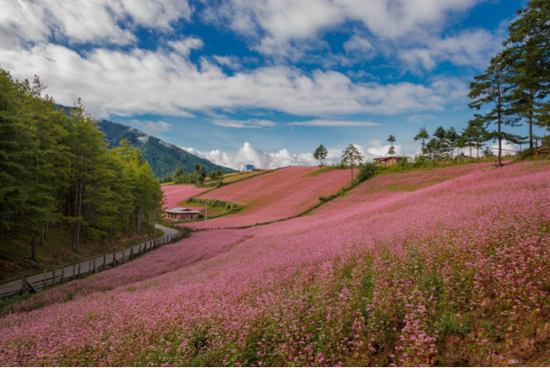
b. Top Attractions
Paro Taktsang (Tiger’s Nest Monastery): A sacred monastery perched on a cliff, accessible via a scenic hike.
Buddha Dordenma: The Buddha Dordenma is a magnificent 54-meter-tall golden statue of Shakyamuni Buddha, perched atop a hill in Thimphu, Bhutan, symbolizing peace and prosperity.
Punakha Dzong: A stunning fortress at the confluence of the Pho and Mo Rivers, known for its architectural brilliance.
Phobjikha Valley: A peaceful glacial valley home to black-necked cranes during the winter months.
Bumthang: The cultural heartland of Bhutan, rich with ancient temples and monasteries.
Check out the full article on Top 40 Places and Things to Do in Bhutan.
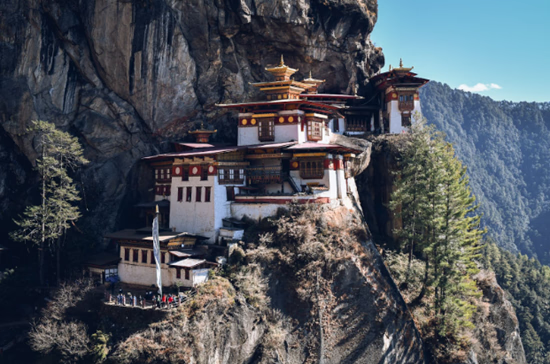
c. Activities
5. Accommodation Options
Bhutan offers accommodations catering to various budgets and preferences:
All accommodations booked through your tour operator meet government standards for quality and comfort.
6. Cultural Etiquette and Tips
Respect Local Customs: Wear modest clothing that covers your shoulders and knees, especially when visiting religious sites. Avoid pointing at sacred objects or turning your back on religious statues.
Photography: Some temples and monasteries prohibit photography; always check with your guide.
Currency and Payment: Bhutanese Ngultrum (BTN) is the official currency, and Indian Rupees are widely accepted. Major hotels and shops accept credit cards, but carry cash for rural areas.
Tipping: While not mandatory, tipping guides and drivers for exceptional service is appreciated.
Check out the full list of Do’s and Don’ts in Bhutan.
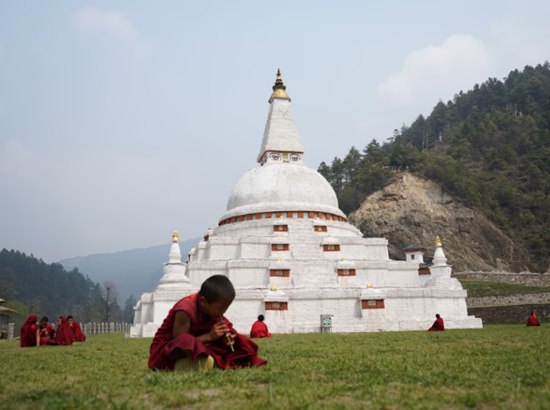
7. Packing Essentials
Clothing: Pack for varying temperatures; include lightweight layers for day hikes, a warm jacket for cool evenings, and waterproof gear during the monsoon season.
Accessories: A sturdy pair of trekking shoes, sunglasses, a hat, and sunscreen are essential.
Tech Gear: In Bhutan the power plugs and sockets are of type D, F and G. The standard voltage is 230 V – 240 V and the standard frequency is 50 Hz. Bring a travel adapter (Type D, F or G).
Personal Items: Carry essential medications, a reusable water bottle, and snacks for long journeys.
Check out the Ultimate Bhutan Packing List.
8. Costs and Budgeting
SDF: USD 100 per person per night.
Tour Packages: For a 7-day trip to Bhutan, tour packages can start from USD 280 per person per day, inclusive of accommodation, meals, guide, and transport (excluding the SDF).
Additional Expenses: Budget for souvenirs, tips, and optional activities like hot stone baths, archery or horseriding. Bhutan’s craft markets offer exquisite textiles, handmade paper, and traditional art.
With this detailed preparation, your journey to Bhutan from Europe will be seamless and unforgettable.

Book with Druk Asia for Seamless Planning
Want other personalised tips for planning your dream trip to Bhutan? Get in touch with our team of friendly and highly experienced Bhutan Travel Specialists.
Purchase a copy of Bhutan Travelog, a comprehensive Bhutan travel guidebook at www.bhutantravelog.com.
Find out what our travellers say about their experience in Bhutan.
